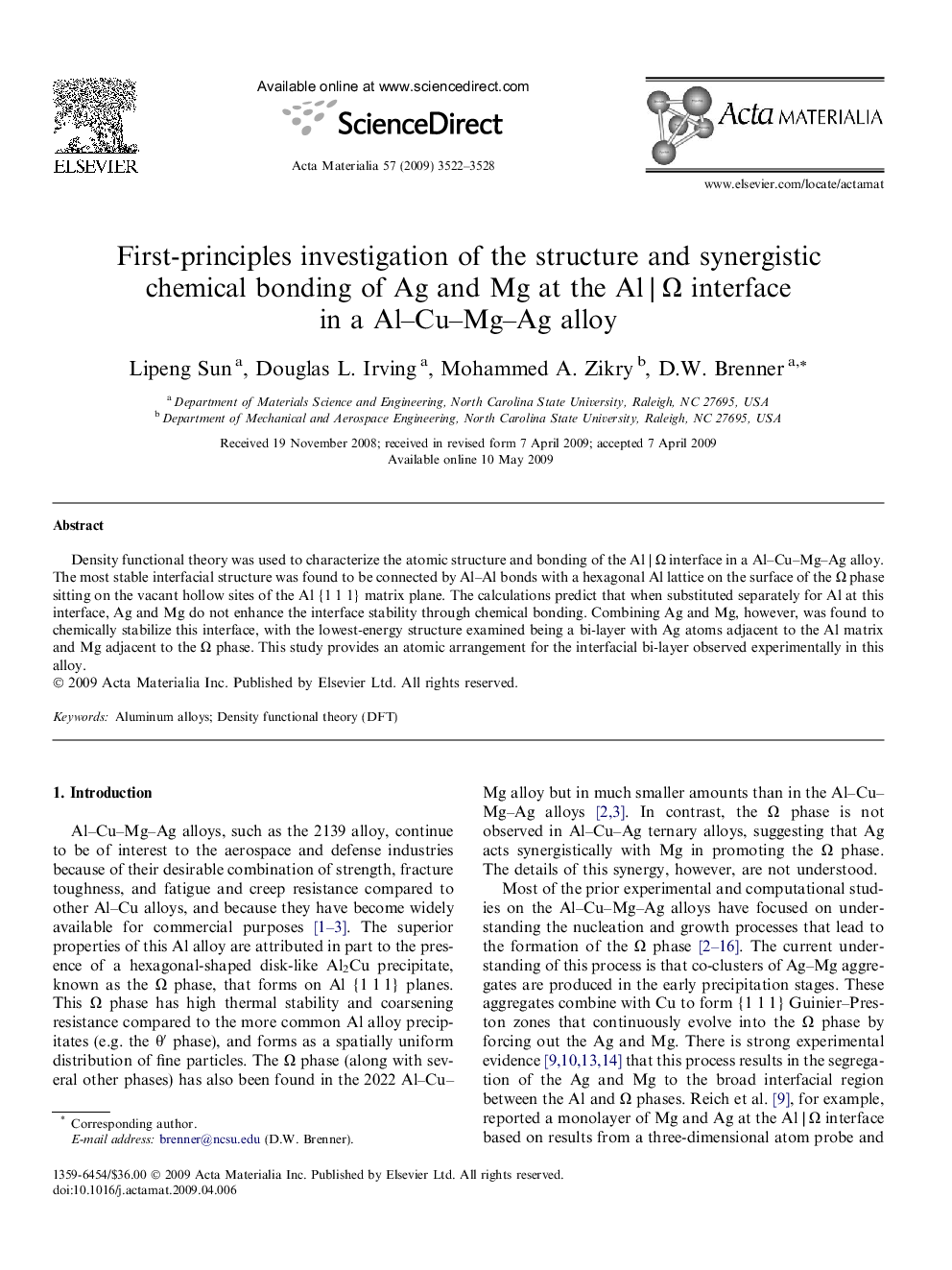| Article ID | Journal | Published Year | Pages | File Type |
|---|---|---|---|---|
| 1448313 | Acta Materialia | 2009 | 7 Pages |
Density functional theory was used to characterize the atomic structure and bonding of the Al | Ω interface in a Al–Cu–Mg–Ag alloy. The most stable interfacial structure was found to be connected by Al–Al bonds with a hexagonal Al lattice on the surface of the Ω phase sitting on the vacant hollow sites of the Al {1 1 1} matrix plane. The calculations predict that when substituted separately for Al at this interface, Ag and Mg do not enhance the interface stability through chemical bonding. Combining Ag and Mg, however, was found to chemically stabilize this interface, with the lowest-energy structure examined being a bi-layer with Ag atoms adjacent to the Al matrix and Mg adjacent to the Ω phase. This study provides an atomic arrangement for the interfacial bi-layer observed experimentally in this alloy.
